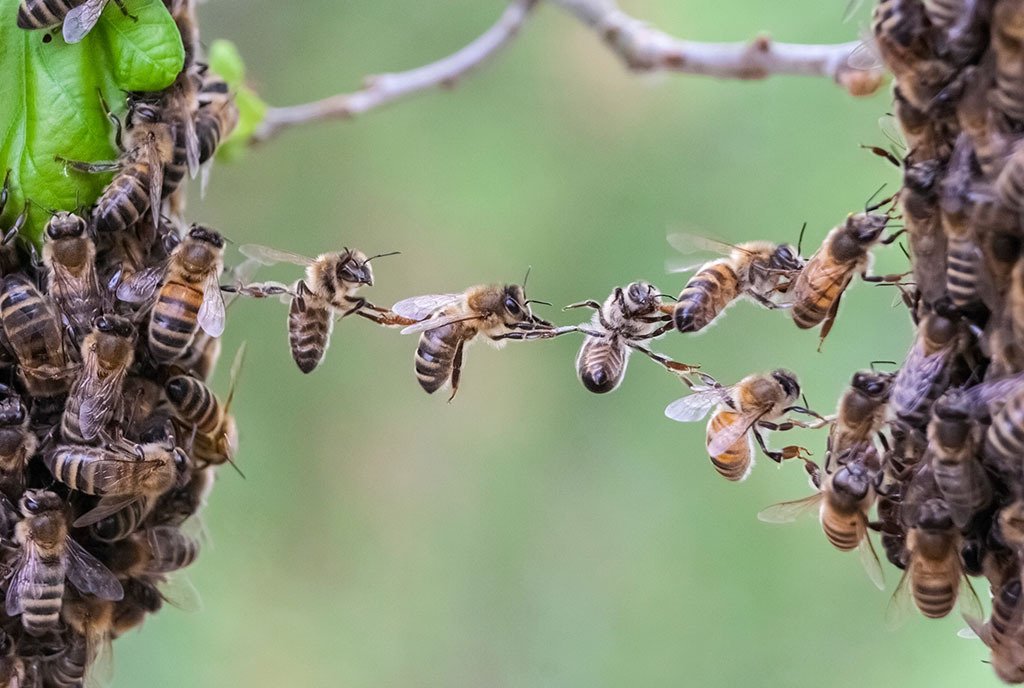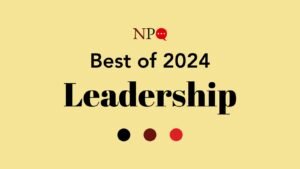
Positive social change requires that the communities most affected by injustice build the power necessary to transform systems and policies. Often the leaders from these communities are Black, Indigenous, or people of color. While there are deeply woven similarities between communities, they all have distinct needs and organize within that unique context.
To explore these matters, the contributors, who are both organizers from different cultural and racial backgrounds, interviewed each other.
Alberto Retana is the president of Community Coalition (CoCo), a South Los Angeles-based organizing institution that trains activists and organizers to support power building with Black, Latine, Indigenous communities, and communities of color. The other participant, Jamila Rice, is the organizing and membership director at Power California, a multiracial civic engagement organization that works with young people and their families in urban, suburban, and rural communities statewide.
This interview has been edited for length and clarity.
Jamila Rice: Alberto, you joined Community Coalition in 1998 as a youth organizer. You’ve held quite a few leadership roles since then. Reflecting on over two decades of organizing in South Los Angeles, what would you say is a core insight from your experience?
Alberto Retana: When I reflect, I’m able to take stock and be grateful for what Community Coalition has been able to accomplish. I recall moments, for example, 10 years ago that felt really important….They have shaped our work. But I do think that as you get older, you realize this is truly a fight spanning 100, 200, even 300 years.
JR: Is there a point you arrived at that thought?
“How far can my imagination go that I can give my folks the opportunity and resources they need to shine? That’s what I get to create.”
AR: At some point, I stopped focusing on what I wanted to win in the next year and started considering what I wanted us to achieve over the next 100 years. I don’t mean to underplay the importance of wins. It’s important for us to have tangible, concrete, material victories for our people—for members to be invested in and to see the power that they possess. However, the process and motion of building power is what often gets lost.
AR: What about you, Jamila? Tell me about how you got started.
JR: I started organizing as a young person right around the time that Trayvon Martin was murdered. I was about 14 years old, and an agitator, and I was certainly angry. But it wasn’t until I organized with Californians for Justice that I had the privilege of now having language to communicate my experiences. For the last two years, I’ve been at Power California, building the membership model up from the ground, which allows me to imagine all the possibilities.
AR: What have you been imagining?
JR: That’s the limitless question I’m always asking myself. How far can my imagination go that I can give my folks the opportunity and resources they need to shine? That’s what I get to create. I get to recruit my folks and build an amazing team. Organizing and activism is not something you can do without getting involved. It’s a trade that you learn. I get to teach my people this trade—and win policy, build power, and bring resources to my community.
I told you that I started organizing angrily. At some point in my journey, I stopped being angry and started imagining all the possibilities—like 10,000 members in the next five years who support and engage in at least one of our issues.
AR: With your eyes set on 10,000 new members, how does Power California address any gaps in organizing to make sure all those different voices are included and heard?
JR: This question brings to my mind Power California’s growth—where we started and where are now. We’re only five years old. We’re relatively young compared to most organizations, but we have always adapted to the immediate needs of our communities. Power California was created from the union of Mobilize the Immigrant Vote and YVote—two groups that organized immigrants, refugees, and youth of color. We have taken many shapes over the years, but specifically with Power California, we recognize that there is a need to organize in underresourced, overlooked communities, like the agricultural areas of the Central Valley and inland California, and really invest in communities that lacked an organizing infrastructure.
“You don’t get thwarted by differences because you know who the real villain is, and who the real allies are. Differences build unity.”
We’ve always relied on different voices and actively sought them out. In the Central Valley, there wasn’t an organizing entry pathway for folks who were fresh out of high school and there wasn’t a political home for young people of color. Power California has been filling those gaps and directly working to build power across the state.
JR: Switching gears a little bit, Alberto, tell me about your people and South LA?
AR: South LA is a community with a rich history. It’s a collection of about 40 different neighborhoods and each has a story to tell. It is home to Black and Latine folks, and they have always lived with each other—sharing buses to school, food, and some cultural experiences. But we also share the oppression that we experience, the exploitation, the invisibility, the policing, and decades of public and private disinvestment. There are a lot of conditions that have allowed us to lock arms.
Efforts are continually made to create division between our people. Community Coalition was formed in response to that, uniting Black and Latine people to transform the oppressive conditions that undermine quality of life in South LA.
Sign up for our free newsletters
Subscribe to NPQ's newsletters to have our top stories delivered directly to your inbox.
By signing up, you agree to our privacy policy and terms of use, and to receive messages from NPQ and our partners.
JR: That makes me think of a question we are always getting asked: How do you do multiracial organizing?
AR: You invite people to a room, you talk about what the problems are, and then you decide to work on them together. From the outside, it seems complex, but that’s really it. Folks struggle with the division because division exists in US society. It’s individualistic and pits communities against each other. So, if you buy into that fabric, then, of course, you’ll get those questions. But if you understand reality, then it does not surprise you. You don’t get thwarted by differences because you know who the real villain is, and who the real allies are. Differences build unity. Coming together is an acknowledgment of those differences.
If you’re able to unite and struggle together, you can go after the very thing that is causing oppression in the first place. Whether it’s colonialism, capitalism, or a broken education system. As a leader bringing people together, you must have the stamina and resilience to withstand the ways in which White supremacy, patriarchy, and heteronormative philosophies are force-fed to us, making us believe in division.
AR: Turning that question back on you, Jamila. How does Power California do multiracial organizing and build solidarity in the communities you organize in?
JR: Similar sentiments. Division is inherent to the founding of our country. Stamina and resilience are key, and I would also add that we can’t give in to hopelessness and despair. Despite the long and rich history of Black farmers and communities in the Central Valley, Black people don’t have a lot of political power and visibility. It’s challenging for organizations to organize and recruit Black youth and create spaces of Black and Latine solidarity in the Valley. I’ve found that it starts with the organizers and the relationships we have with one another. We have to be real and build a deep understanding about how our communities struggle with each other.
I remember a time where Black members I worked with were disappointed with their Latine comrades about the lack of visible support for the Black Lives Matter movement. It took time and care to slow down and have those conversations. I couldn’t have held those solidarity conversations without the support of my fellow Latine organizers. Like our members, we are connected through the idea that our communities deserve better and that together we can lead that change. When we ask our members to show up as their authentic selves, we, too, have to show up the same way in the spaces we organize.
It’s important to organize and unify by the issues that impact our members the most. Recently, it’s been housing. I would also say climate change because it displaces a lot of people in our communities. So, we are building solidarity through the issues that are impacting us in this lifetime. We are united in the belief that big corporations should not influence the governments to shape our lives and so we offer political education around that. It’s like something you said earlier. The real villain—the opposition—has way more money and is better prepared. So, it’s going to take all of us to win a more equitable California.
AR: Earlier, you asked me about the most impactful moments of my time at CoCo. What are some of Power California’s wins that stick with you?
JR: We ran a huge campaign in coalition back in 2020—Schools and Communities First [Proposition 15]. It was a huge ballot initiative. We didn’t win. But we came really close and made a significant impact like never before. That was the closest any group has gotten to make billionaires pay their fair share in taxes.
Currently, we are going through a Fresno rent control campaign. It’s a multiyear campaign and we are starting to win some protections. There’s still more to do—we are aiming to be the first city in the Central Valley to pass rent control.
AR: That’s amazing. What makes the Central Valley an important place for Power California to be in?
JR: We work in smaller farmworker communities like Sanger, Parlier, Merced, even Fresno, and so the folks we organize are young immigrants, Latine farmworkers, and their families. The Central Valley is the fruit basket of the world, and our people are often overworked and subjected to terrible conditions, in addition to being underpaid. It’s an awful contradiction between providing nourishment for all these communities and the labor it takes, which is often not enough. These are the folks we are organizing. They are our people and part of our political home. It’s also important to note that the Central Valley and inland communities tend to lean conservative, so it sits at the intersection of this huge opportunity gap to engage young BIPOC voters and shift people and power.
“We have to be radically honest with ourselves, our power, and our losses—and deeply interrogate our strategy.”
JR: I want to come back to this point about winning. I mentioned that we didn’t win our campaign in 2020. As you know there are times in this fight when we don’t always get the wins we want while building solidarity. We don’t see those material conditions change or we end up losing people to the system. As a leader in the movement, how do you navigate that?
AR: The first and probably the most obvious way is to have connection with your people and community. If you have that, you can weather any loss. That’s key. If you’re doing this work alone—it’s easy to give up and adopt the model of White supremacy and dog-eat-dog neoliberal individualism. But if you surround yourself with people, you completely obliterate those philosophies.
This might be an unpopular take. But I do think it’s okay to lose. Don’t get me wrong, winning is really important because it means we are building power. Dr. King said, “Power, properly understood, is the ability to achieve purpose. It is the strength required to bring about social, political, or economic changes.” So, if we’re not winning, that reflects the power we don’t have, and the power we have yet to build.
This is why the Community Coalition is building a Center for Community Organizing—to both serve as a school to help train the next generation of organizers, but also a political home for us to come together, strategize, build power, dissect the losses, and go back out and fight. In theory, it’s important to understand the impact of winning and losing, but we need the physical, material space to retreat to.
We have to be radically honest with ourselves, our power, and our losses—and deeply interrogate our strategy. We must be willing to analyze and criticize it as best we can because our people deserve the best.
It’s not always about winning or losing. This is about the process—the process of engaging people, building community, and building solidarity. This allows you to have a lasting impact and use that imagination you talked about earlier to do things differently.









